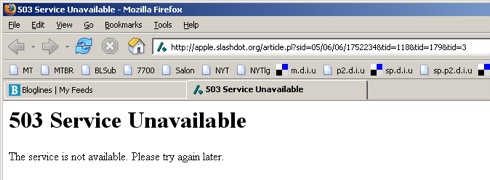Saturday, Prairie and I went wandering around downtown, hoping to get a glimpse of Seattle’s World Naked Bike Ride participants. Unfortunately, that didn’t work out, as they changed their route due to the temporary closure of the Seattle Center’s International Fountain, and we missed seeing them.
It sounds like the ride went off well enough, though, according to the Seattle Times.
Seattle police kept an eye on yesterday’s ride, but there were no arrests or citations, and nobody called police to complain, said police spokesman Sean Whitcomb.
Seattle’s laws on public nudity are somewhat vague and open to interpretation, Whitcomb said. Being able to charge someone with public indecency depends on someone else feeling victimized, and on the actions of the nude person, he said.
There is no clear-cut language in the law to say when being nude becomes offensive, Whitcomb said. “What’s offensive to one person may not be offensive to another.”
Still, the day wasn’t a total loss. On our wandering we went through the Pike Place Market, and as we were in the lower levels, something in the bins of a used music store caught my eye. I stopped, backed up, pulled the record out of the bin…and started to laugh.
“You’re thinking about getting it, aren’t you?” asked Prairie.
“You know it! This is too good to pass up!”
She laughed. “Well, it’s only two dollars….” We headed in to the store. The clerk we dealt with was rather oddly bland — most music store clerks I’ve seen tend to take some amount of interest in what the customers are buying, but this guy had no reaction whatsoever — but one of the other employees saw what I was buying and complimented me on my choice.
 And that’s how I became the proud owner of Discotheque for Polka Lovers, featuring Johnny Vadnal and his Orchestra.
And that’s how I became the proud owner of Discotheque for Polka Lovers, featuring Johnny Vadnal and his Orchestra.
The only downside is that I don’t currently have a turntable, so at the moment, I’ve got no way to actually listen to this treasure. Still, one way or another, eventually I’ll have one again (I’ve got a bunch of records I’d love to hear again, and there’s a family collection that regularly moves among myself, Kevin, and Dad).
It was just too good — or too bad — to pass up.


